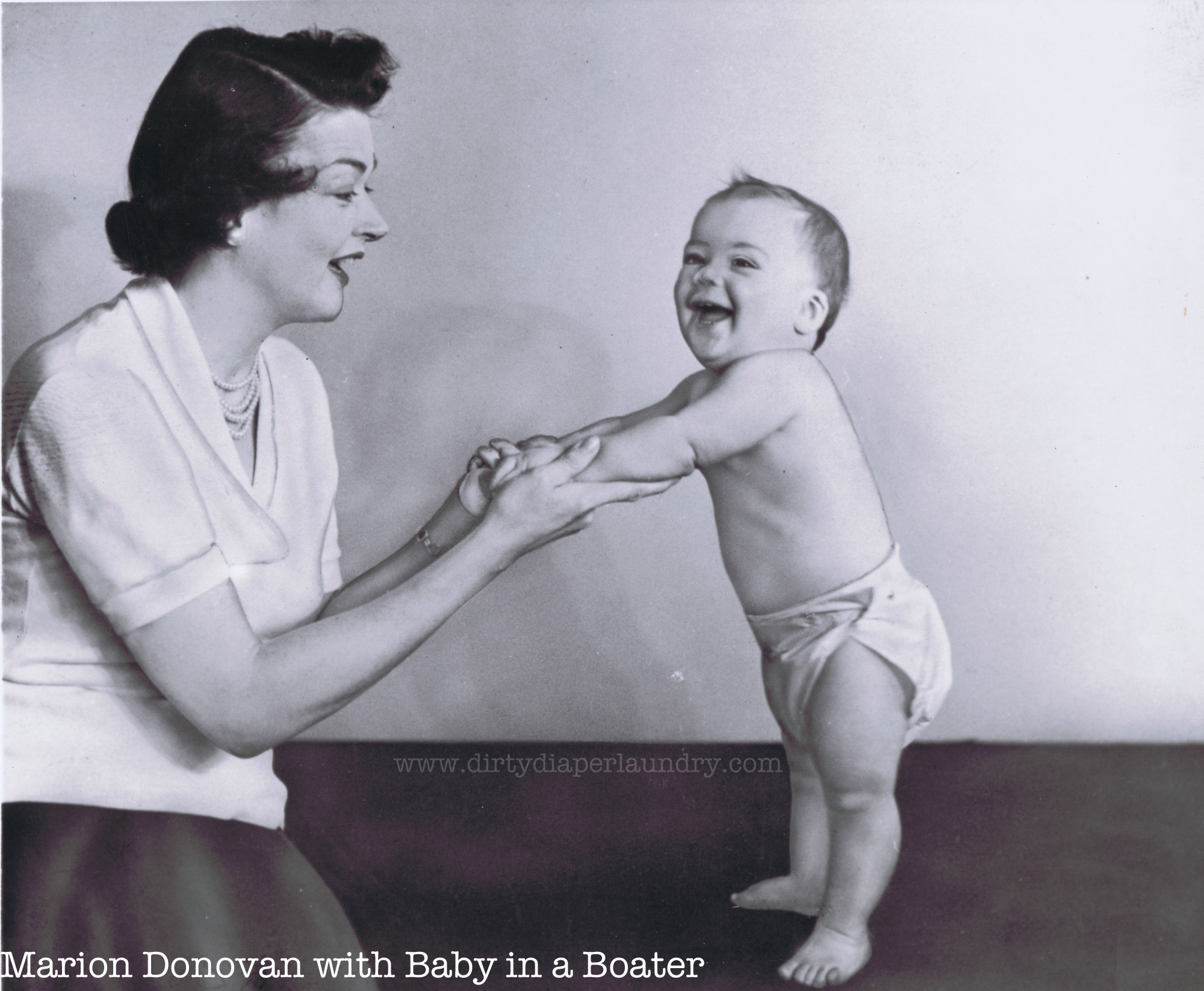To fix leaky cloth diapers, adjust the fit around the legs and use additional absorbent inserts. Ensure proper washing techniques to maintain absorbency.
Leaky cloth diapers can be frustrating for parents. Proper fit and absorbency are crucial to prevent leaks. Often, the issue lies with the fit around the legs or insufficient absorbency. Adjusting the diaper snugly around your baby’s legs helps contain leaks.
Adding extra inserts can boost the diaper’s absorbency. Proper washing techniques are also essential to maintain the diaper’s effectiveness. Avoid using fabric softeners, as they can reduce absorbency. Regularly stripping the diapers can help remove buildup. By addressing these factors, you can ensure a more reliable and leak-free experience with cloth diapers.

Credit: dirtydiaperlaundry.com
Common Causes
Leaky cloth diapers can be frustrating, but understanding the common causes can help fix the problem. Let’s explore the main reasons why cloth diapers might leak and how to address them effectively.
Poor Fit
A poor fit is a leading cause of leaks. Diapers that are too loose or too tight can cause gaps or pressure points. These gaps let moisture escape.
- Too Loose: Gaps around the legs and waist allow leaks.
- Too Tight: Over-tightening can cause compression leaks.
Ensure the diaper fits snugly around your baby’s legs and waist. Adjust the snaps or velcro for a better fit.
Repelling Issues
Repelling issues occur when diapers repel liquid instead of absorbing it. This usually happens due to detergent buildup or the use of fabric softeners.
| Cause | Solution |
|---|---|
| Detergent Buildup | Strip the diapers to remove residues. |
| Fabric Softener | Avoid using fabric softeners. |
Absorbency Problems
Sometimes, the diaper may not have enough absorbency to hold the liquid. This can be due to several factors:
- Inadequate Inserts: Not using enough inserts or boosters.
- Worn-Out Diapers: Old diapers lose their absorbency.
- Heavy Wetters: Some babies urinate more than others.
Check the absorbency level of your diapers. Add additional inserts if needed. Replace worn-out diapers to improve performance.
Choosing The Right Size
Choosing the right size for cloth diapers is crucial to avoid leaks. A proper fit ensures maximum absorption and comfort for your baby. Let’s explore how to select the perfect size.
Weight Guidelines
Each diaper brand provides weight guidelines to help you choose the right size. Here is a basic guide:
| Weight Range (lbs) | Suggested Size |
|---|---|
| 6-12 | Newborn |
| 12-18 | Small |
| 18-25 | Medium |
| 25-35 | Large |
Always check the manufacturer’s guidelines for precise measurements. Babies grow fast, so monitor their weight regularly.
Adjusting Snaps
Modern cloth diapers come with adjustable snaps. Snaps help you customize the fit. Follow these steps:
- Lay the diaper flat.
- Place your baby on the diaper.
- Adjust the waist snaps to fit snugly.
- Use the rise snaps to control the diaper length.
A snug fit prevents leaks. Make sure there are no gaps around the legs. Check the waist for a secure fit without being too tight.
Choosing the right size and adjusting snaps properly ensures your baby stays dry and comfortable. Regularly check the fit as your baby grows.
Proper Washing Techniques
Ensuring your cloth diapers are properly washed is crucial. It prevents leaks and keeps your baby comfortable. Effective washing techniques can extend the life of your diapers. This section covers the essentials of proper washing.
Detergent Types
Choosing the right detergent is vital. Cloth diapers need a detergent that cleans well without leaving residues. Residues can cause leaks and skin irritation.
Here are some suitable detergent types:
- Plant-based detergents: Gentle on fabric and skin.
- Free and clear detergents: No added dyes or fragrances.
- High-efficiency detergents: Suitable for HE washing machines.
Avoid using fabric softeners or bleach. These can damage the diaper’s fibers and cause leaks.
Washing Frequency
Washing cloth diapers frequently is important. It helps maintain their absorbency and prevents build-up.
Follow this simple washing schedule:
- Pre-rinse: Rinse diapers with cold water before washing.
- Main wash: Use hot water and a proper amount of detergent.
- Extra rinse: Rinse again to remove any detergent residues.
Wash cloth diapers every 2-3 days. This prevents stains and build-up.
Remember to dry the diapers thoroughly. You can use a dryer or air dry them under the sun.
| Step | Action |
|---|---|
| 1 | Pre-rinse with cold water |
| 2 | Main wash with hot water and detergent |
| 3 | Extra rinse to remove residues |
| 4 | Dry thoroughly |

Credit: dirtydiaperlaundry.com
Stripping Diapers
Stripping diapers is a crucial process to maintain their absorbency. Over time, cloth diapers can accumulate residues from detergents, oils, and minerals. This buildup can cause leaks and reduce their effectiveness. Stripping helps to remove these residues, restoring the diapers to their optimal condition.
When To Strip
Knowing when to strip your cloth diapers can save you from leaks and frustration. Here are some signs to look out for:
- Diapers smell bad even after washing.
- They leak more than usual.
- Your baby has frequent diaper rashes.
- Diapers feel stiff or less absorbent.
It’s generally a good idea to strip your diapers every few months. This ensures they stay fresh and functional.
Stripping Methods
There are several methods to strip cloth diapers. Each method targets different types of residue buildup. Choose the one that best fits your needs.
| Method | Description |
|---|---|
| Hot Water Rinse | Rinse diapers in very hot water to remove detergent residues. |
| Vinegar Soak | Soak diapers in a vinegar solution to break down mineral deposits. |
| Bleach Soak | Use a diluted bleach solution to kill bacteria and eliminate buildup. |
| Commercial Stripping Products | Specialized products designed to strip cloth diapers effectively. |
- Hot Water Rinse: Place diapers in the washing machine. Run a cycle with the hottest water setting.
- Vinegar Soak: Mix one cup of vinegar with water. Soak the diapers for 30 minutes. Rinse thoroughly.
- Bleach Soak: Add 1/4 cup of bleach to a full tub of water. Soak the diapers for 30 minutes. Rinse well.
- Commercial Stripping Products: Follow the instructions on the product packaging. Usually involves a soak and rinse cycle.
After stripping, always perform a regular wash cycle to remove any remaining residues. This ensures your diapers are clean and safe for your baby.
Boosting Absorbency
Boosting absorbency is crucial for fixing leaky cloth diapers. Increasing absorbency ensures fewer leaks and keeps your baby dry. Let’s explore two effective methods: inserts and doublers.
Inserts
Inserts are additional layers placed inside the diaper. They enhance the diaper’s absorption capability. Inserts come in various materials, each with unique benefits:
- Microfiber: Absorbs quickly but can hold less liquid.
- Bamboo: Highly absorbent and soft on the skin.
- Hemp: Extremely absorbent and holds more liquid.
- Cotton: Natural, absorbent, and easy to clean.
Choose inserts based on your baby’s needs. For heavy wetters, opt for hemp or bamboo. For quick absorption, microfiber works well.
Doublers
Doublers are extra absorbent layers placed on top of the inserts. They provide additional absorption where needed most. Doublers come in different shapes and sizes:
- Regular: Fits most diapers and adds moderate absorbency.
- Contour: Shaped to fit snugly and prevent leaks.
- Overnight: Thicker for nighttime use and heavy wetters.
Using doublers can significantly reduce leaks, especially during long naps or overnight. Combine doublers with your preferred inserts for optimal results.
Here’s a quick comparison table for materials:
| Material | Absorbency | Drying Time |
|---|---|---|
| Microfiber | Quick | Fast |
| Bamboo | High | Moderate |
| Hemp | Very High | Slow |
| Cotton | Moderate | Fast |
Boosting absorbency with inserts and doublers can help fix leaky cloth diapers. Choose the right materials and combinations for your baby’s needs.
Dealing With Repelling
Repelling can be a frustrating issue for cloth diaper users. When diapers repel moisture, leaks occur. This guide helps you identify and solve repelling problems.
Identifying Repelling
First, check if your diapers are repelling water. To do this, pour a small amount of water on the clean diaper’s surface. If the water beads up and rolls off, your diaper is repelling.
Common causes of repelling include:
- Build-up of detergent residue
- Use of fabric softeners
- Improper rinsing
- Oily residues from creams
Solving Repelling
To fix repelling issues, follow these steps:
- Strip the diapers: Wash them in hot water with a small amount of detergent.
- Rinse thoroughly: Rinse until no suds remain. This removes detergent residues.
- Avoid fabric softeners: Fabric softeners leave a coating that repels moisture.
- Use a cloth diaper-safe detergent: These detergents are less likely to cause build-up.
- Apply diaper-friendly creams: Use creams that do not contain petroleum or zinc.
Here is a simple table to summarize the steps:
| Step | Action |
|---|---|
| 1 | Strip the diapers |
| 2 | Rinse thoroughly |
| 3 | Avoid fabric softeners |
| 4 | Use cloth diaper-safe detergent |
| 5 | Apply diaper-friendly creams |
By following these steps, you can ensure your cloth diapers remain absorbent and leak-free.
Nighttime Solutions
Nighttime can be challenging for cloth diapering parents. Leaky cloth diapers can disrupt sleep for both the baby and the parents. Fortunately, there are effective nighttime solutions to keep your baby dry and comfortable throughout the night.
Overnight Inserts
Overnight inserts are thicker and more absorbent than regular inserts. They are specifically designed to handle the extra wetness that accumulates overnight.
Consider using inserts made of bamboo or hemp. These materials are more absorbent than microfiber and cotton. They can hold more liquid, keeping the baby dry for longer periods.
To use overnight inserts:
- Place the insert inside the diaper pocket.
- Ensure it is flat and covers the entire diaper area.
- Check the fit around the legs to prevent leaks.
Adding a second insert can also help. Doubling up increases absorption capacity, providing extra protection against leaks.
Fitted Diapers
Fitted diapers offer a snug fit and superior absorbency. They are an excellent choice for nighttime use.
Fitted diapers are made entirely of absorbent material. They wrap around the baby, providing multiple layers of protection.
Here are some benefits of using fitted diapers at night:
- High Absorbency: Fitted diapers can hold more liquid than standard diapers.
- Secure Fit: The snug fit reduces the chance of leaks around the legs and waist.
- Breathable: Many fitted diapers are made of natural fibers, allowing the baby’s skin to breathe.
To use fitted diapers:
- Wrap the fitted diaper around the baby.
- Secure it with snaps or Velcro.
- Cover with a waterproof diaper cover to prevent leaks.
Fitted diapers can be paired with overnight inserts for extra absorbency. This combination ensures a leak-free night.

Credit: www.simplymombailey.com
Preventing Future Leaks
Leaky cloth diapers can be a hassle, but preventing future leaks is possible. With a few simple steps, you can keep your cloth diapers leak-free. Regular maintenance and proper care are key. This section covers routine checks and proper storage to help you prevent leaks.
Routine Checks
Routine checks are essential for maintaining the integrity of your cloth diapers. Inspect your cloth diapers regularly to ensure they are in good condition. Here are some tips to follow:
- Check the Fit: Make sure the diaper fits snugly around your baby’s legs and waist.
- Inspect the Elastic: Look for signs of wear and tear in the elastic bands.
- Examine the Inserts: Ensure the inserts are absorbing properly and are not worn out.
- Test for Repelling: Pour a small amount of water on the diaper. If it beads up, it’s time to strip the diaper.
Proper Storage
Proper storage of cloth diapers is crucial to prevent leaks. How you store them can affect their performance. Follow these storage tips:
- Use a Dry Pail: Store soiled diapers in a dry pail to prevent mold and mildew.
- Avoid Plastic Bags: Do not store diapers in plastic bags as they can trap moisture.
- Wash Regularly: Wash cloth diapers every 2-3 days to prevent build-up of bacteria and ammonia.
- Sun Dry: Dry your diapers in the sun when possible. The sun naturally bleaches and sanitizes them.
Following these tips for routine checks and proper storage will help you prevent future leaks. Keeping your cloth diapers in good condition ensures they remain effective and reliable.
Frequently Asked Questions
How Do I Fix A Leaky Cloth Diaper?
To fix a leaky cloth diaper, check the fit first. Ensure there are no gaps around the legs. Use enough absorbent layers. Try different folds or inserts. Regularly check for wear and tear.
Why Are My Cloth Diapers Leaking At Night?
Cloth diapers may leak at night due to insufficient absorbency. Add extra inserts or use a nighttime-specific diaper. Ensure a snug fit to prevent gaps. Check for any repelling issues with the fabric.
Can Detergent Cause Cloth Diapers To Leak?
Yes, using the wrong detergent can cause buildup on cloth diapers. This buildup can lead to repelling and leaks. Use a detergent free of fabric softeners and additives. Regularly strip your diapers to remove any residue.
How Tight Should Cloth Diapers Be?
Cloth diapers should be snug but not too tight. Ensure there are no gaps around the legs and waist. You should be able to fit one finger between the diaper and the baby’s skin comfortably.
Conclusion
Fixing leaky cloth diapers is simple with the right tips. Ensure a proper fit and use quality inserts. Regular maintenance and checking for damage also help. With these steps, your baby’s comfort and dryness are guaranteed. Enjoy hassle-free diapering and a happier baby!




